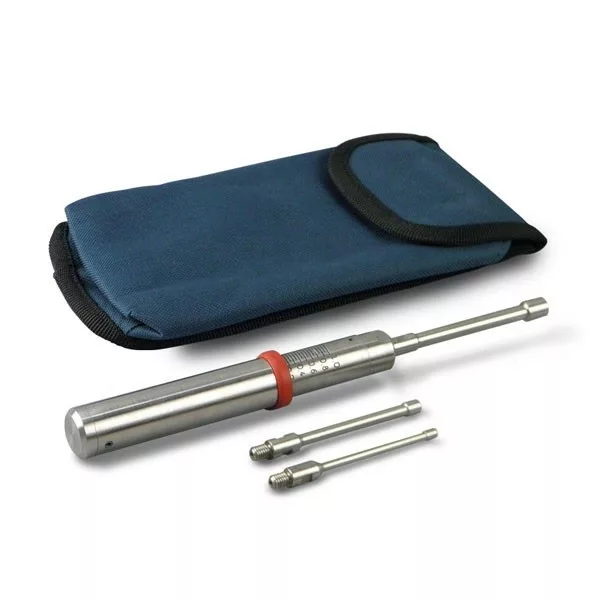Precision Soil Testing with the Pocket Penetrometer KPP/A/10
In the fields of civil engineering, geology, and agriculture, understanding soil strength and consistency is critical for ensuring the stability and success of various projects. The Pocket Penetrometer KPP/A/10 is a compact, portable tool that provides an easy and accurate way to measure the unconfined compressive strength of soil. Whether you’re working on construction sites, conducting field surveys, or performing soil analysis in the lab, the pocket penetrometer is an indispensable instrument for professionals who need reliable soil data on the go. In this comprehensive guide, we’ll explore the features, benefits, and applications of the pocket penetrometer, and why it’s an essential tool for soil testing.
What is a Pocket Penetrometer?
A pocket penetrometer is a handheld device designed to measure the unconfined compressive strength of soil directly in the field. This measurement is crucial for determining the load-bearing capacity of the soil, which influences construction decisions and the safety of structures. The device consists of a calibrated spring-loaded plunger that, when pressed into the soil, provides a reading that corresponds to the soil’s strength. Pocket penetrometers are widely used due to their portability, ease of use, and ability to deliver immediate results.
Key Features of Pocket Penetrometers
- Compact and Portable Design: The pocket penetrometer’s small size and lightweight construction make it easy to carry and use in various field conditions, from construction sites to remote agricultural areas.
- Calibrated Measurements: The device is calibrated to provide accurate readings of soil strength in tons per square foot (tsf) or kilograms per square centimeter (kg/cm²). This calibration ensures that the readings are reliable and consistent across different soil types.
- Durable Construction: Made from robust materials, pocket penetrometers are designed to withstand harsh field conditions, including exposure to dirt, moisture, and rough handling.
- Clear and Easy-to-Read Scale: The scale on a pocket penetrometer is typically marked clearly, allowing users to quickly obtain accurate readings without the need for complex calculations or additional tools.
- Penetration Indicator: Some models include a penetration indicator to ensure consistent depth during testing, which is crucial for obtaining reliable results.
- Versatile Applications: Pocket penetrometers can be used on a variety of soil types, from loose sand to clay, making them versatile tools for different environmental conditions and testing needs.
Benefits of Using a Pocket Penetrometer
- Immediate and On-Site Results: One of the primary advantages of using a pocket penetrometer is its ability to deliver instant results directly at the testing site. This immediacy allows for quick decision-making during construction or surveying projects.
- Cost-Effective Soil Testing: The pocket penetrometer offers a cost-effective solution for soil testing, especially when compared to more complex and expensive laboratory equipment. Its affordability makes it accessible for a wide range of users, from small contractors to large engineering firms.
- User-Friendly Operation: The simplicity of the pocket penetrometer means that it can be used by professionals and non-experts alike, without the need for extensive training. Its straightforward design makes it easy to operate, even in challenging field conditions.
- Versatility Across Industries: Whether you’re involved in construction, agriculture, or environmental science, the pocket penetrometer is a versatile tool that can be used in various applications to assess soil stability and strength.
- Enhanced Safety and Compliance: By providing accurate soil strength measurements, the pocket penetrometer helps ensure that construction projects meet safety standards and regulatory requirements. This can prevent costly delays, accidents, and structural failures.
Applications of Pocket Penetrometers
- Construction and Civil Engineering: In construction, pocket penetrometers are used to evaluate soil strength before building foundations, roads, and other structures. Accurate soil strength data helps engineers design foundations that are stable and capable of supporting loads.
- Agriculture and Soil Management: In agriculture, pocket penetrometers are used to assess soil compaction, which can affect root growth and crop yield. By measuring soil strength, farmers can determine the need for soil aeration or other treatments to improve soil health.
- Geotechnical Surveys: Geologists and geotechnical engineers use pocket penetrometers during field surveys to assess soil conditions in areas prone to landslides, erosion, or other geotechnical hazards. This information is vital for planning and risk management.
- Environmental Assessments: Environmental scientists use pocket penetrometers to analyze soil conditions in various ecosystems, helping to monitor soil health and detect changes due to environmental factors like pollution or climate change.
- Road and Pavement Construction: In road construction, pocket penetrometers are used to assess the strength of subgrade soils, which is critical for ensuring the durability and longevity of pavements and roadways.
- Mining and Exploration: In the mining industry, pocket penetrometers are used to evaluate soil and overburden strength, helping to determine the feasibility and safety of mining operations.
Choosing the Right Pocket Penetrometer
When selecting a pocket penetrometer, consider the specific needs of your projects. Key factors include the device’s measurement range, calibration accuracy, durability, and ease of use. It’s also important to choose a penetrometer that is compatible with the soil types you’ll be testing and that meets any industry standards or regulations relevant to your field.
Conclusion
The pocket penetrometer is an essential tool for professionals who need to assess soil strength quickly and accurately. Its portability, ease of use, and ability to provide immediate results make it invaluable for a wide range of applications, from construction and agriculture to environmental science and geotechnical surveys. By investing in a high-quality pocket penetrometer, you can ensure that your soil testing is both reliable and efficient, helping you make informed decisions that enhance the safety, stability, and success of your projects.
For expert advice on selecting the ideal pocket penetrometer for your needs, contact our team today.





Reviews
There are no reviews yet.